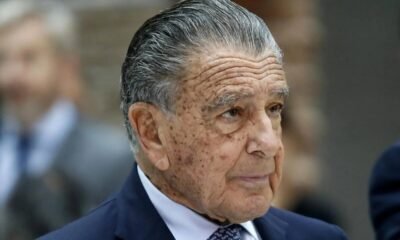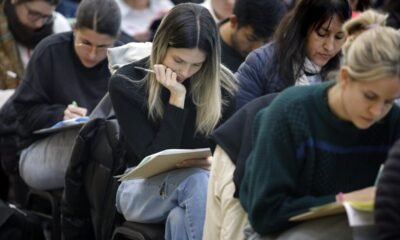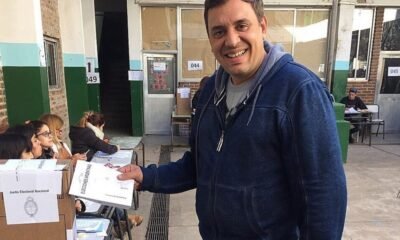INTERNACIONAL
Trump admin cracks down antisemitism as DOJ official exposes ‘violent rhetoric’ of radical protesters
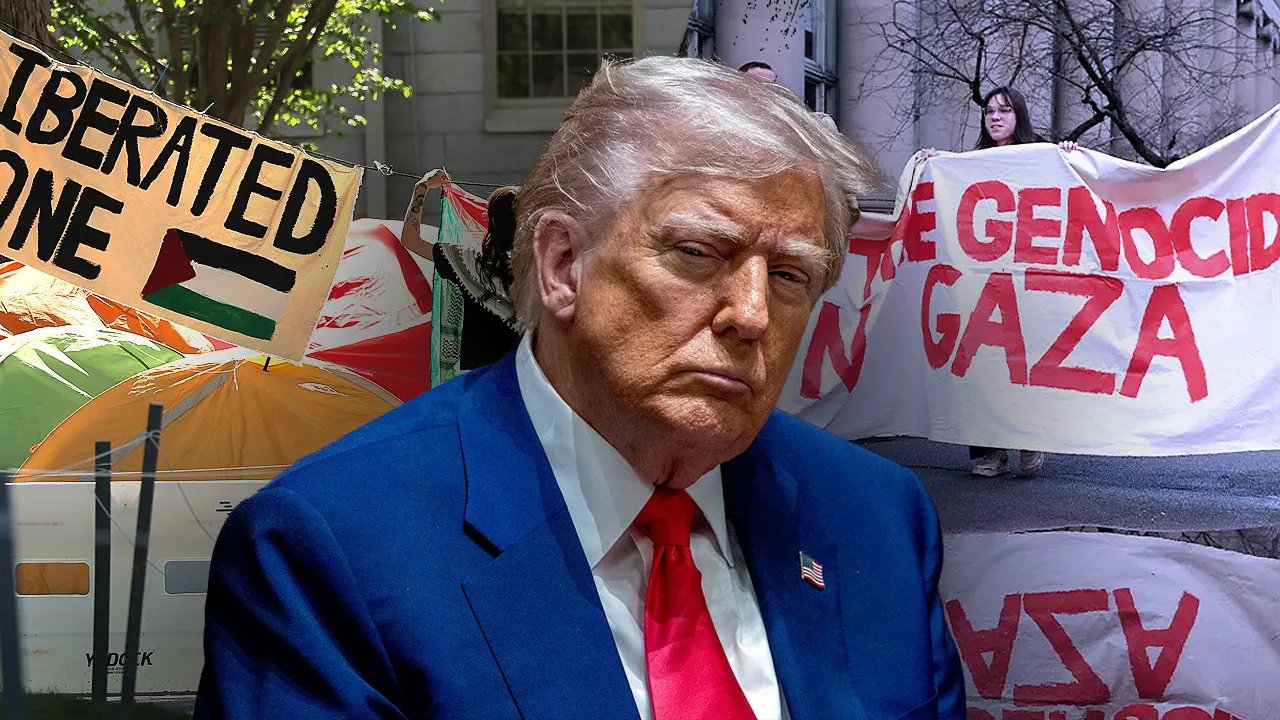
NEWYou can now listen to Fox News articles!
The Trump administration has taken a more aggressive approach than its predecessor toward addressing the nationwide surge in antisemitic incidents, launching investigations, punishing elite universities, and intensifying its immigration enforcement practices.
President Donald Trump, through his Department of Justice (DOJ) and other agencies, is using law-and-order tactics that his deputies say are necessary, but that critics say could constitute overreach.
Harmeet Dhillon, the DOJ’s assistant attorney general for the Civil Rights Division, told Fox News Digital she has not seen any «close cases» when it comes to weighing antisemitic behavior against First Amendment rights of those who oppose Israel or Judaism.
BIDEN EDUCATION DEPT PUT PRIORITY ON PRONOUNS, LEFT BACKLOG OF NEARLY 200 ANTISEMITISM COMPLAINTS: OFFICIAL
«Criticizing the government of Israel is not what I’m typically seeing here,» Dhillon said. «I’m seeing an intifada revolution. I’m seeing blocking Jewish students from crossing campuses and destroying property on campus, which is a crime. … Quiet, polite conversation and disagreement with Israeli policy is not really what’s happening here. It’s literally people saying Israel shouldn’t exist — and bringing the revolution to the United States.»
Dhillon added that «that type of violent rhetoric has led to violent acts in our country.»
Antisemitic violence
After Hamas’s deadly terrorist attack on Israel on Oct. 7, 2023, the FBI’s hate crime statistics showed a sharp spike in anti-Jewish incidents in the U.S. The data runs through December 2023.
Anti-Defamation League (ADL) data from 2024 and high-profile incidents this year suggest the trend is continuing.
Police respond to a firebombing in Boulder, Colo., last week, where a suspect identified as Mohamed Sabry Soliman, right, was arrested and charged by state and federal authorities. (Storyful/KDVR)
An Egyptian national in the U.S. illegally in Boulder, Colorado, is facing state and federal charges for allegedly injuring 15 people, including elderly victims and a dog last weekend with Molotov cocktails during a peaceful pro-Israel demonstration in support of hostages being held by Hamas terrorists in Gaza.
Suspect Mohamed Sabry Soliman, 45, stated to authorities «he wanted to kill all Zionist people and wished they were all dead,» according to an FBI affidavit. During the attack he allegedly yelled «free Palestine,» the agent said.
In May, Yaron Lischinsky and Sarah Milgrim, who worked at the Israeli Embassy in Washington, D.C., were gunned down outside the Capitol Jewish Museum in D.C.
Suspect Elias Rodriguez of Illinois shouted «free Palestine» as he was detained, and Interim U.S. Attorney for D.C. Jeanine Pirro said her office is investigating the case as a hate crime and act of terrorism.
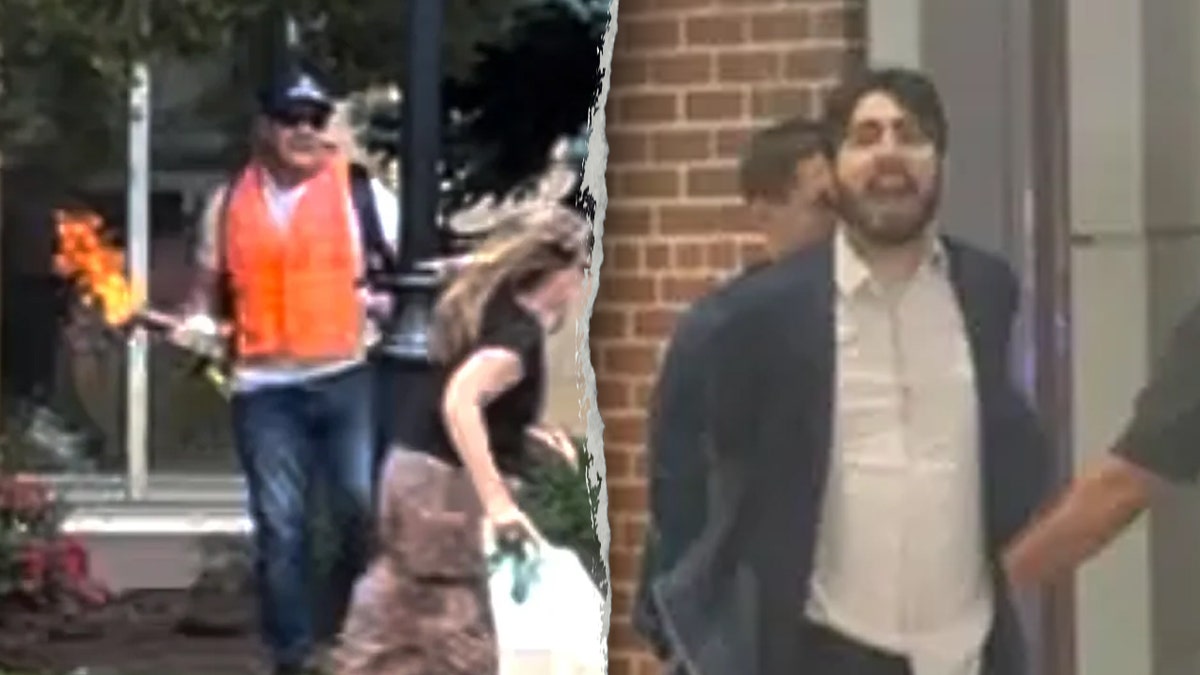
Mohamed Sabry Soliman, left, and Elias Rodriguez allegedly committed crimes, including murder, and shouted, «Free Palestine» afterward. (Alex Osante / Instagram/@shinewithIsrael)
SUSPECT CHARGED WITH MURDERING ISRAELI EMBASSY STAFF COULD FACE DEATH PENALTY
In another incident, a man allegedly set fire to Pennsylvania Gov. Josh Shapiro’s residence on the first night of Passover. Emergency call logs released by local authorities revealed that the suspect, Cody Balmer, invoked Palestine after the arson and blamed Shapiro, who is Jewish, for «having my friends killed.»
Tarek Bazrouk, who identified himself as a «Jew hater» and said Jewish people were «worthless,» allegedly carried out a series of assaults on Jewish New Yorkers in 2024 and 2025, according to an indictment brought against him in May.
Bazrouk wore a green headband that mimicked Hamas garb and a keffiyeh during the attacks, and he celebrated Hamas and Hizballah on his social media, according to federal authorities.
Harvard and Columbia
Trump warned in an executive order at the start of his presidency that foreign nationals participating in «pro-jihadist protests» would be deported, and he specifically highlighted college campuses as being «infested with radicalism.»
Unlike the Biden administration, the Trump administration has since gone to war with elite universities, some of which have been roiled by disruptive pro-Palestinian protests that involve occupying academic buildings and installing encampments.
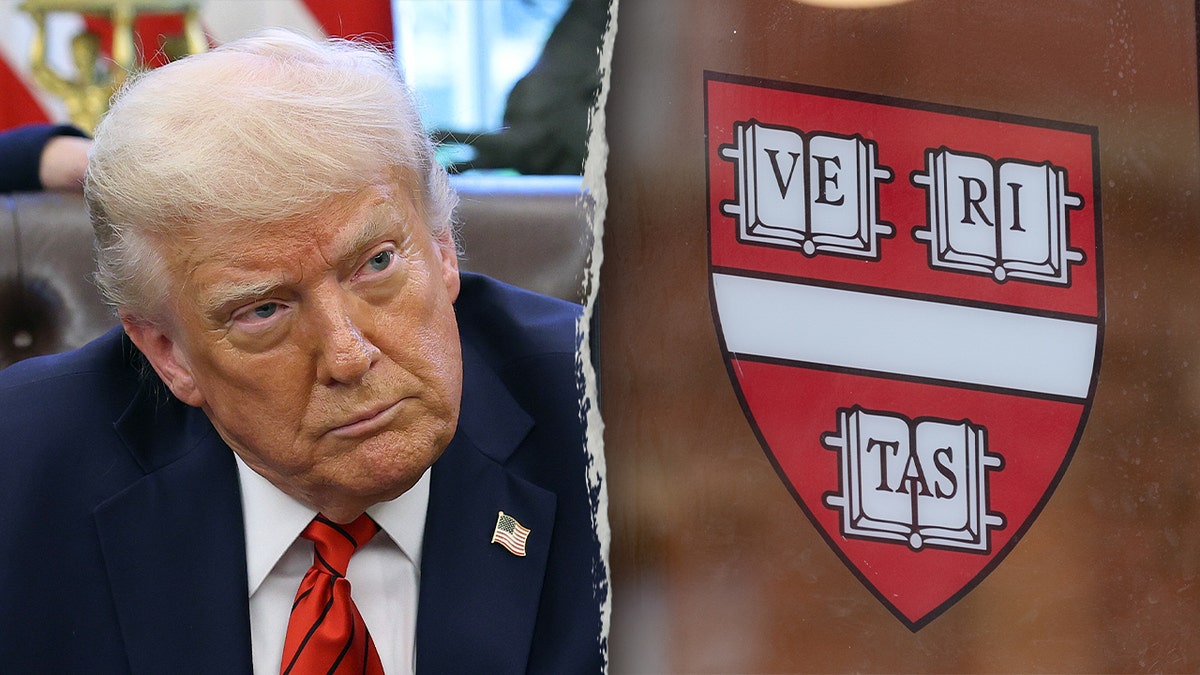
The Trump administration has taken on elite universities such as Harvard.
LEO TERRELL SAYS TRUMP ADMIN WILLING TO TAKE HARVARD ANTISEMITISM FIGHT ALL THE WAY TO SUPREME COURT
Harvard and Columbia, in particular, are now engaged in litigation after Trump moved to freeze billions of dollars in federal funding for the universities and ban Harvard’s foreign students.
The embattled schools have been successful in winning temporary pauses to Trump’s sanctions through the courts, but litigation is pending and legal experts have said they face an uphill battle.
Free speech controversies
The Trump administration has zeroed in on non-citizen students and activists who it has accused of supporting Palestinian causes in ways it deems hostile to U.S. interests.
Amid Trump’s pursuit of visa and green card holders, Mahmoud Khalil’s case has become a flashpoint.
Khalil was arrested in March and detained after the administration accused him of violating immigration laws by engaging in anti-Israel activism.
This week, Khalil said in court papers the administration’s claims against him were «grotesque» and that his activism involved «protesting this Israeli government’s indiscriminate killing of thousands of innocent Palestinians.»
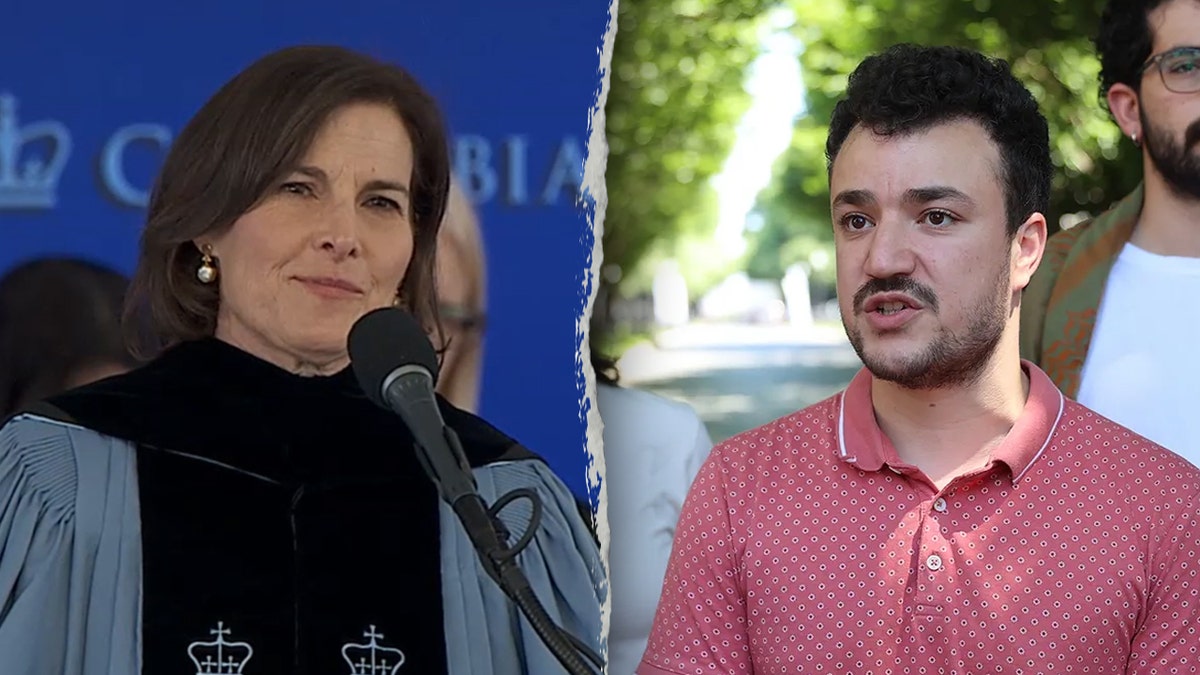
Acting Columbia University President Claire Shipman was interrupted by students during graduation, who chanted, «Free Mahmoud,» calling for Mahmoud Khalil, right, to be freed. (Columbia University / Selcuk Acar/Anadolu via Getty Images)
Civil rights groups have warned that the government’s hardliner posture risks violating free speech and protest rights. A coalition of 60 groups issued a joint statement this week on antisemitic hate crimes in which it warned the Trump administration not to over-correct because it would «make us all less safe.»
«As we condemn these heinous [antisemitic] acts and those who perpetrate hate and violence, we also recommit to ensuring that these events — and the legitimate fear in the Jewish community — are not exploited to justify inhumane immigration policies or to target Arab Americans and those who peacefully and nonviolently exercise their First Amendment rights in support of Palestinian human rights,» the groups said.
Dhillon told Fox News Digital: «It’s not my responsibility to balance free speech issues on campus. It’s my responsibility to enforce the federal civil rights laws. And my opinion, there’s really no conflict.»
Antisemitic task force and more
When he took office, Trump vowed in a string of executive orders to direct Attorney General Pam Bondi to «aggressively prosecute terroristic threats, arson, vandalism and violence against American Jews.»
Trump appointees at the DOJ then moved quickly to convene an antisemitism task force. Dhillon said there is also frequent communication between the White House, the DOJ, and Jewish leaders about addressing antisemitism.
JEWISH STUDENTS WELCOME TRUMP ADMIN’S CRACKDOWN ON ANTISEMITISM, HAMAS SYMPATHIZERS ON CAMPUSES
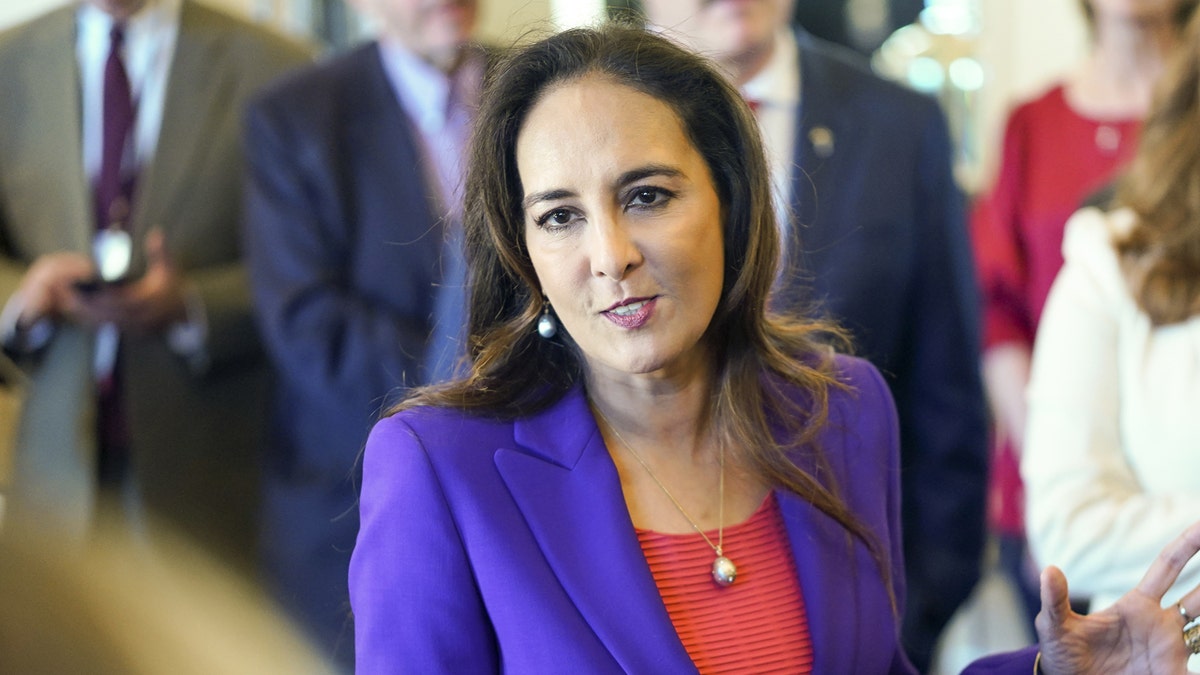
DOJ Assistant Attorney General for the Civil Rights Division Harmeet Dhillon says she’s focused on launching the division’s work toward combating antisemitism. (Kyle Grillot/Bloomberg via Getty Images)
«We have heard from the Jewish community, and I’ve probably met with — I think there’s at least two dozen rabbis who have my number on speed dial now. I literally sent three emails to rabbis in the last hour,» she said.
She said her division has opened several investigations involving land use for religious purposes under a law known as the Religious Land Use and Institutionalized Persons Act (RLUIPA), including five related to Judaism. The administration is also notifying Jewish communities of grants available for added security at synagogues, and she said campuses are a «significant focus» for her.
Internal turmoil
After reports surfaced that Dhillon’s shakeup in the Civil Rights Division led to a mass exodus of more than 100 attorneys leaving the division, she told the media she was unfazed by the departures and that her focus remains on launching the division’s work toward combating antisemitism.
Testing the limits of his subordinates and the courts, another top DOJ official, Emil Bove, launched an internal investigation into Columbia student protesters early this year. The probe caused concern among line attorneys, who felt it was flimsy and was also met with multiple reprimands from a magistrate judge, according to the New York Times.
CLICK HERE TO GET THE FOX NEWS APP
Deputy Attorney General Todd Blanche said in a statement in May that the New York Times’ story was false and fed to the newspaper «by a group of people who allowed antisemitism and support of Hamas terrorists to fester for years.»
Blanche confirmed the veracity of the investigation and said it involved, in part, a probe into a Hamas-linked image on Columbia University Apartheid Divest’s social media.
INTERNACIONAL
Rubio rips Venezuela’s Maduro as ‘narco-terrorist’ leader threatening US one year after disputed election
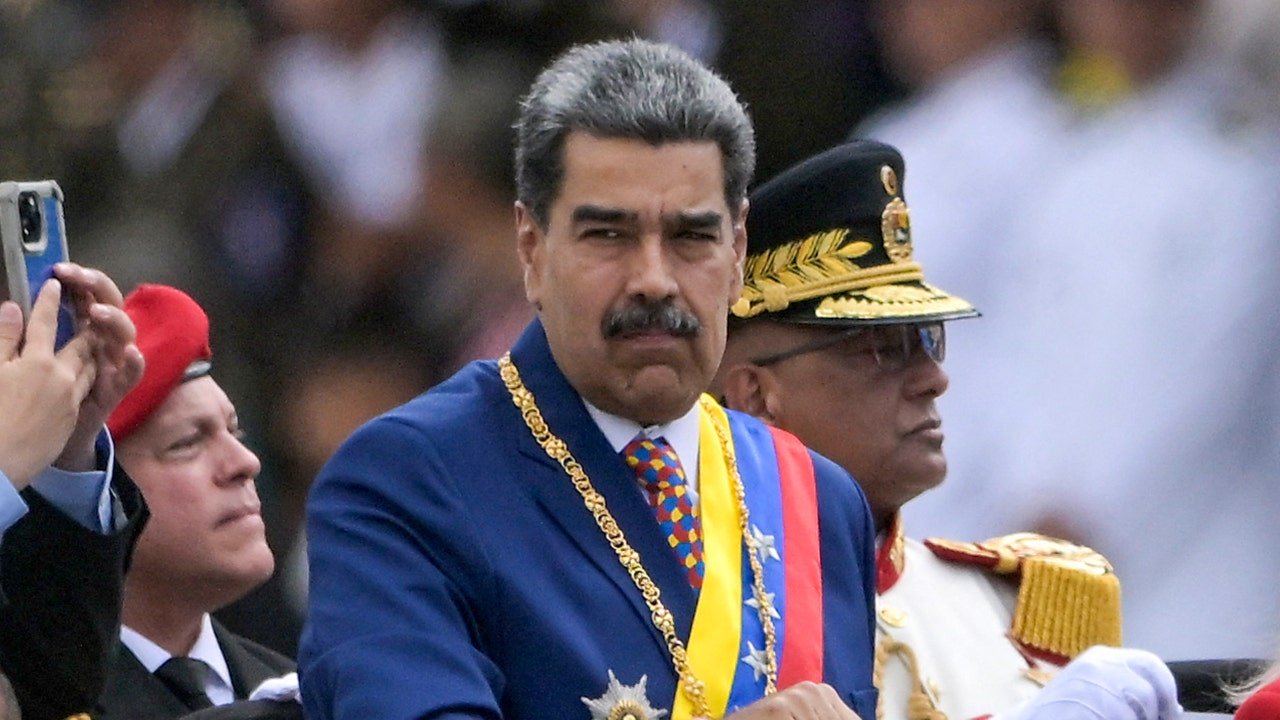
NEWYou can now listen to Fox News articles!
Secretary of State Marco Rubio is hammering Venezuelan dictator Nicolás Maduro on Sunday as the South American country holds municipal elections to fill hundreds of mayoral positions and thousands of council seats.
The municipal contests are happening one day before the one-year anniversary of Venezuela’s presidential election, which was widely condemned by the United States and other international observers as illegitimate. The Trump administration, meanwhile, has been escalating pressure against Maduro in recent days, as Treasury Secretary Scott Bessent on Friday accused the foreign head of state of being the leader of an entity aiding terrorism against the U.S.
«One year since dictator Nicolás Maduro defied the will of the Venezuelan people by baselessly declaring himself the winner, the United States remains firm in its unwavering support to Venezuela’s restoration of democratic order and justice,» Rubio said in a statement on Sunday. «Maduro is not the President of Venezuela and his regime is not the legitimate government.»
TRUMP FOE BOASBERG ORDERS DOJ TO DETAIL STATUS OF CECOT MIGRANTS SENT TO VENEZUELA
Venezuela’s President Nicolas Maduro parades in a military vehicle during celebrations for the Independence Day, in Caracas on July 5, 2025. (JUAN BARRETO/AFP via Getty Images)
«Maduro is the leader of the designated narco-terrorist organization Cartel de Los Soles, and he is responsible for trafficking drugs into the United States and Europe,» Rubio continued. «Maduro, currently indicted by our nation, has corrupted Venezuela’s institutions to assist the cartel’s criminal narco-trafficking scheme into the United States.»
The Justice Department charged Maduro and 14 other former and current Venezuelan officials with narco-terrorism, corruption, drug trafficking and other criminal charges in March 2020. At the start of this year, 10 days before President Donald Trump returned to office, the State Department increased its reward for information leading to Maduro’s capture from $15 million to up to $25 million.
«For years, Maduro and his cronies have manipulated Venezuela’s electoral system to maintain their illegitimate grip on power,» Rubio added on Sunday. «By scheduling the municipal elections on the eve of the anniversary of the stolen July 28 presidential election, the regime once again aims to deploy the military and police to suppress the will of the Venezuelan people.»
«The United States will continue working with our partners to hold accountable the corrupt, criminal and illegitimate Maduro regime. Those who steal elections and use force to grasp power undermine America’s national security interests,» Rubio said.
Maduro became the Venezuelan president in 2013, but the U.S. has not recognized his presidency since 2019. The U.S. and other countries have refused to recognize Maduro as the winner of the July 2024 Venezuelan election, citing widespread fraud.
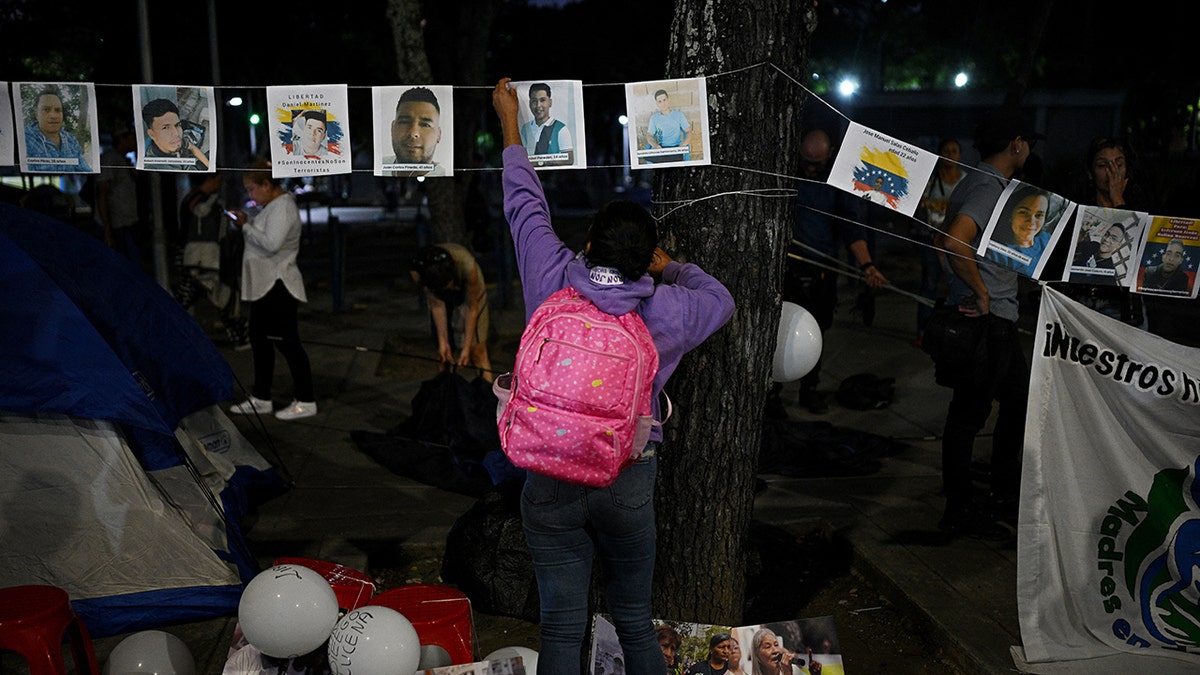
A relative of people detained during protests following the disputed July 28, 2024, presidential elections takes part in a vigil demanding their release in front of the Public Prosecutor’s Office in Caracas on July 16, 2025. (FEDERICO PARRA/AFP via Getty Images)
VENEZUELAN OPPOSITION MEMBER DETAILS HARROWING 400-DAY CAPTIVITY AT UN
The Treasury Department on Friday sanctioned the Cartel de los Soles, also known as Cartel of the Suns, as a «Specially Designated Global Terrorist.» The U.S. alleges that Cartel de los Soles is headed by Maduro and other Venezuelan high-ranking individuals in his regime «who corrupted the institutions of government in Venezuela, including parts of the military, intelligence apparatus, legislature, and the judiciary, to assist the cartel’s endeavors of trafficking narcotics into the United States.»
The U.S. claims the Venezuela-based group provides material support to Tren de Aragua and the Sinaloa Cartel. The Trump administration classified Tren de Aragua and the Sinaloa Cartel as foreign terrorist organizations in February.
According to the Treasury Department, the name Cartel de los Soles is derived from the sun insignias often portrayed on the uniforms of Venezuelan military officials.
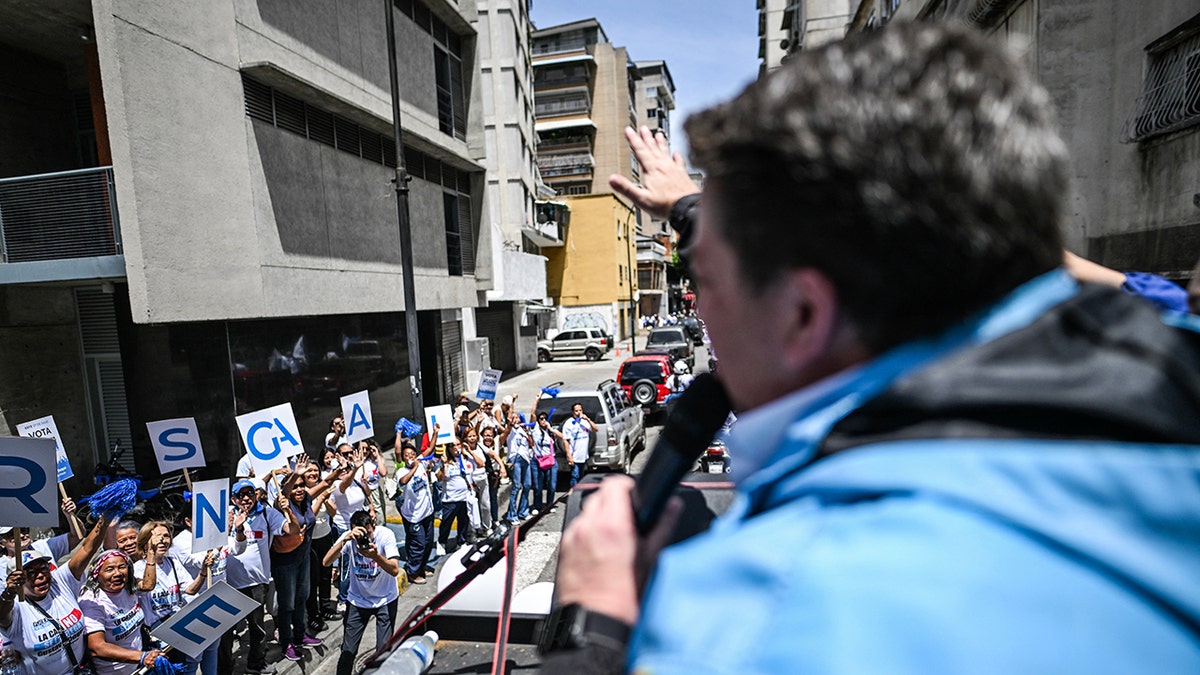
The mayor of the Chacao municipality, Gustavo Duque, speaks to supporters at the start of the election campaign for the municipal elections in Caracas on July 11, 2025. Elections for mayors and councilors will be held on July 27. (JUAN BARRETO/AFP via Getty Images)
The cartel «supports Tren de Aragua in carrying out its objective of using the flood of illegal narcotics as a weapon against the United States,» according to the Treasury Department.
Bessent said on Friday that the new action «exposes the illegitimate Maduro regime’s facilitation of narco-terrorism through terrorist groups like Cartel de los Soles.»
CLICK HERE TO GET THE FOX NEWS APP
«The Treasury Department will continue to execute on President Trump’s pledge to put America First by cracking down on violent organizations including Tren de Aragua, the Sinaloa Cartel, and their facilitators, like Cartel de los Soles,» he added.
INTERNACIONAL
Trump-inspired ‘Japanese first’ politician shakes up nation’s establishment
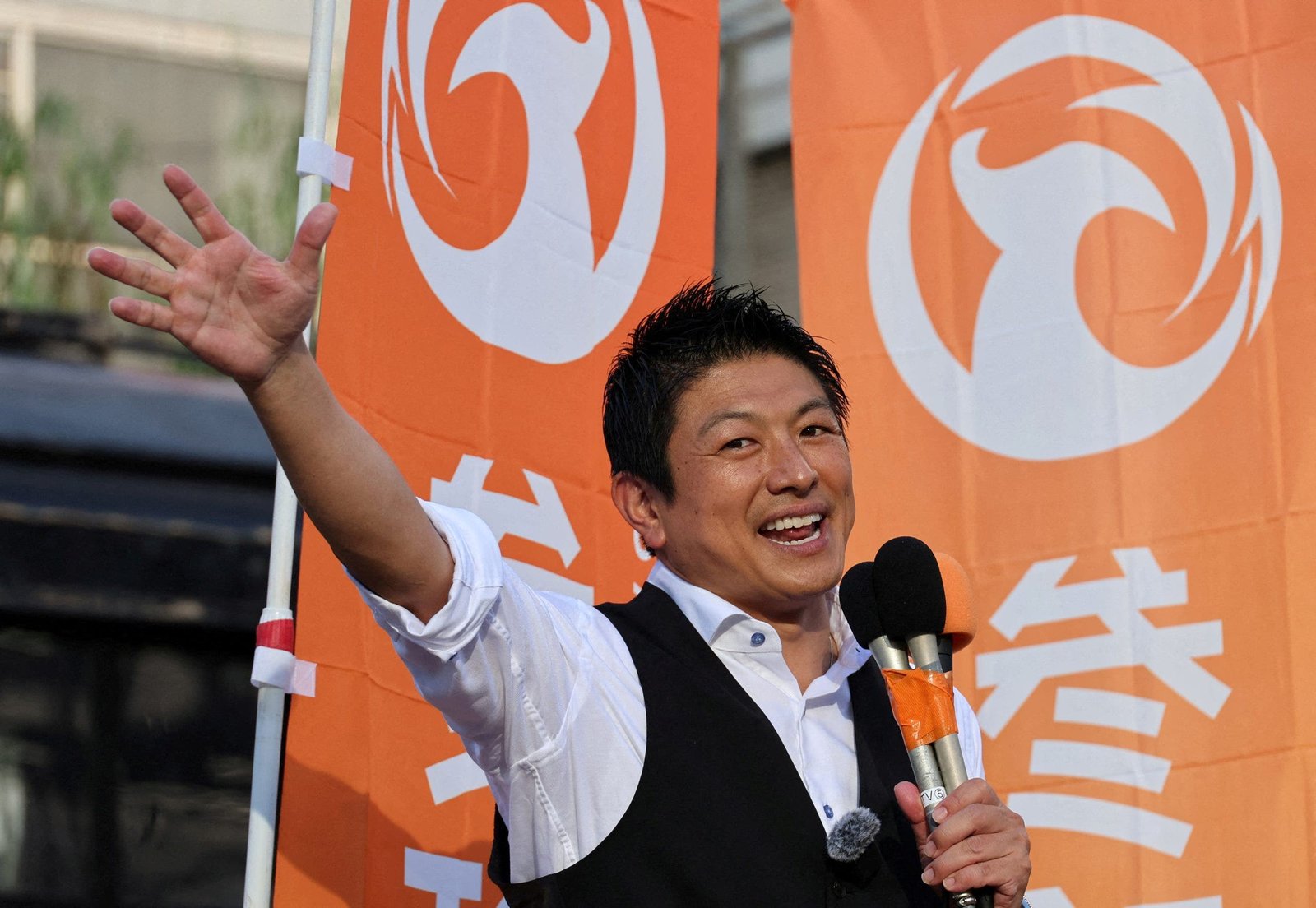
NEWYou can now listen to Fox News articles!
Japanese populist Sohei Kamiya stunned many in the country when his Sanseitō party won 14 seats in Japan’s Upper House elections last week.
«From supermarket manager to bright political star … populism has hit the shores of Japan like a tsunami,» Gatestone Institute senior fellow Gordon Chang told Fox News Digital about 47-year-old Kamiya’s surprise achievement.
Holding 15 of 248 Upper House seats is not sufficient for Kamiya’s party to submit legislation. However, polling data shows Sanseitō’s impact with younger voters, as Kyodo News reported that more than 20% of voters from 18 to 40 voted for his party.
TRUMP SECURES HISTORIC $550B TRADE DEAL WITH JAPAN: ‘NEVER BEEN ANYTHING LIKE IT’
Japan’s Sanseito Party leader Sohei Kamiya poses with his lawmakers during the party’s rally in Tokyo on July 21, 2025, a day after the upper house election. (REUTERS/Kim Kyung-Hoon)
Inspired by President Donald Trump’s leadership style, Kamiya’s rise has largely been attributed to his social media savvy. He snagged his earliest followers through his opposition to «blanket mask mandates, mass PCR testing, and vaccine requirements» during the COVID-19 pandemic, Japan Forward reported.
Kamiya has also adopted a spin-off of Trump’s MAGA motto, proclaiming «Japanese first» as his party promises to strengthen Japan’s culture, birth rates and food sufficiency, while finding solutions for its reliance on immigration.
Though the Western media has characterized Kamiya as far-right, fringe or xenophobic, Lance Gatling, a principal at Nexial Research, Tokyo, told Fox News Digital that while Kamiya’s goals of «protecting Japan, growing Japan, and educating Japan» are «fairly populist,» they do not represent «a radical move towards the right wing.»
In fact, Gatling said many in the Liberal Democratic Party (LDP), which has dominated Japanese politics for decades, «are more right-wing than Sanseitō.» Gatling described members of Kamiya’s party as «pretty reasonable.»
Gaitlin said that Kamiya, formerly a reservist in the Self-Defense Forces and an English teacher, «doesn’t appear to be playing.» Kamiya «has been honing his message for some time,» Gatling said.
JAPANESE GOVERNMENT RESPONDS TO BIDEN CLAIM THAT JAPAN IS ‘XENOPHOBIC’: ‘UNFORTUNATE’
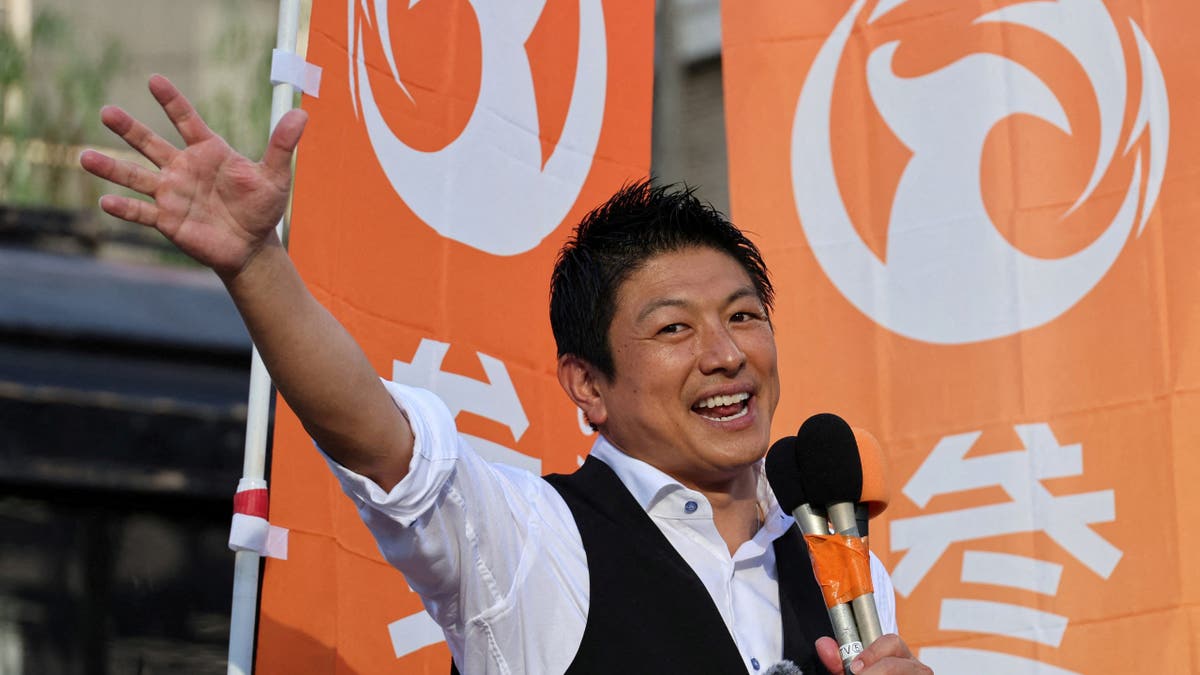
Japan’s Sanseito Party leader Sohei Kamiya delivers a speech during the party’s rally in Tokyo on July 21, 2025, a day after the upper house election. (REUTERS/Kim Kyung-Hoon TPX IMAGES OF THE DAY/File Photo)
Some critics have expressed particular concern over what they call Kamiya’s anti-immigration stance. Immigration, however, has become a chief issue for the island nation. When former President Joe Biden called Japan «xenophobic» for failing to increase immigration in May 2024, Kamiya responded on social media. «It’s not that we’re xenophobic, we are being cautious after seeing your failures,» Kamiya said. «You are meddling too much in our internal affairs.»
Gatling says categorizing the Japanese as xenophobic «just doesn’t ring true.» He explained that the country has «one of the most astonishing cultures in history,» formed by adopting Western culture and enriching it to create «a completely unique culture that has tremendous appeal around the world.»
Gatling says Kamiya is aiming for a return to traditional cultural values, while also lowering taxes and increasing food self-sufficiency, which is currently the lowest rate of all Organization for Economic Co-operation and Development nations at 38%.
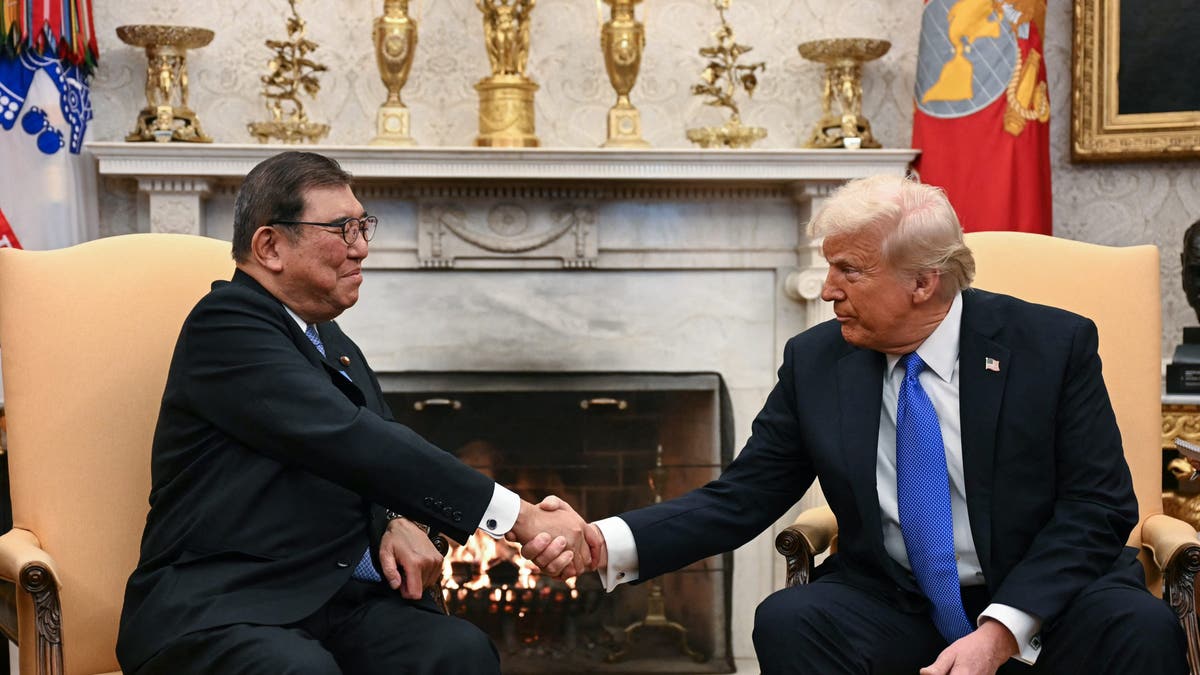
President Donald Trump, right, shakes hands with Japanese Prime Minister Shigeru Ishiba in the Oval Office of the White House in Washington, D.C., on Feb. 7, 2025. (Getty Images)
The rice trade would be critical to this arrangement, with Sanseitō eager to curb imports of U.S. rice. At present, imports of U.S. rice are set to increase by 75%, thanks to a $550 billion trade deal President Donald Trump signed with Japan on July 22.
Another possible friction point in the future might be Sanseitō’s desire to turn the nation’s farmers into public sector employees, Gatling admitted. «The agriculture bloc is one of the most powerful in the LDP,» he explained. «I’m not sure how many of the farmers want to be public sector employees.»
While he says that it is too early to determine the future of Sanseitō in Japanese politics, Gatling said Kamiya has stated he is not «interested in building a coalition government.» Gatling believes the party’s future will hinge on preparations for subsequent elections and demonstrating that «they have reasonable policies.»
Chang said Sanseitō’s win was a loss for the LDP, which he says has «been adrift» since Abe’s 2020 resignation and subsequent 2022 assassination. Current Prime Minister Shigeru Ishiba «is weak and unpopular,» and the LDP now finds itself «in the minority in both houses of the Diet for the first time since the party was formed in 1955,» Chang said. «Ishiba is naturally catching the blame.»
CLICK HERE TO GET THE FOX NEWS APP
While the political waves leave Japan «rudderless,» Chang said to «expect Sanseitō to only get stronger, which means Japan will turn inward. Around the world, societies have had enough of large foreign populations that do not assimilate, so we should not be surprised that Kamiya will become even more influential.
«Change occurs slowly in Japan until it happens all at once. Japan is now on the verge of an all-at-once moment,» Chang said.
INTERNACIONAL
Dos muestras ingresan al surrealismo como campo de fractura y memoria
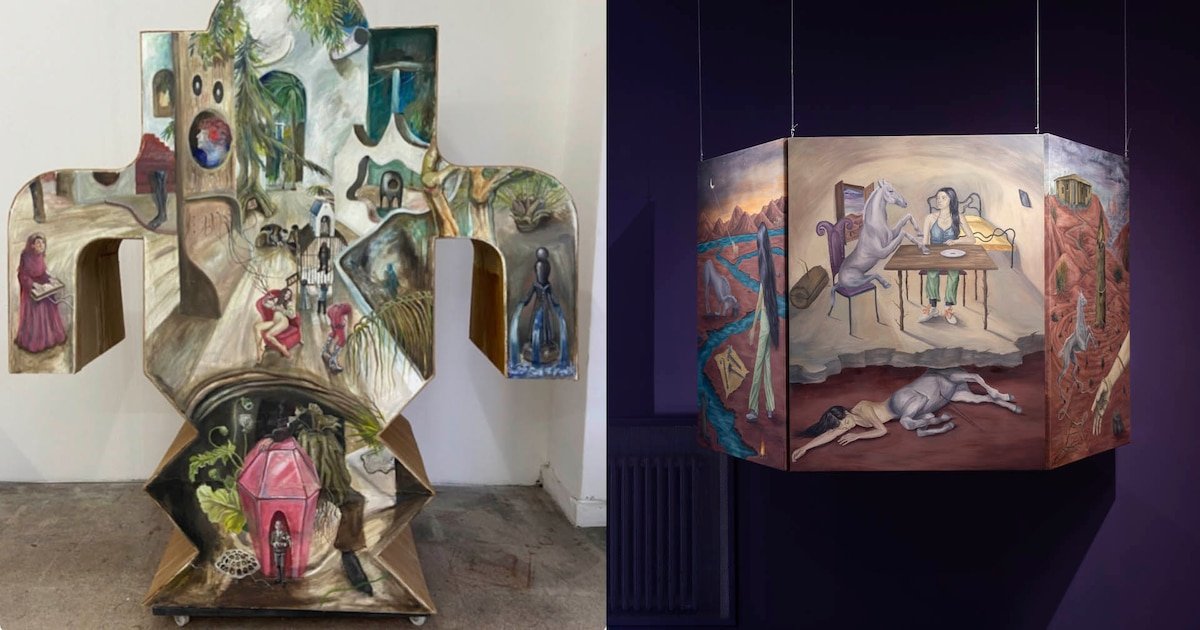
Cuando la realidad se filtra, se somatiza y sale por las rendijas del subconsciente, las expresiones artísticas pueden dispararse hacia territorios que, en apariencia ilusiorios, resguardan eventos e intereses personales.
Renata Juncadella con Lo que corta es un atajo, en galerías Cott, y Miguel Ángel Lorenzio, con Recinto en galeria Julia Baitalá, ingresan de diferentes maneras a ese amplio campo en el que lo surreal, lo onírico, por momentos pesadillesco, en otros sublime, se presenta caóticamente armonioso para generar miradas sobre sus propias proyecciones.
En el caso de Juncadella (Buenos Aires, Argentina, 1999), apenas se ingresa al espacio, una escultura desafía la lógica de los materiales y la percepción del espacio: un árbol de resina, con estructura de hierro y masilla, su primera obra de este tipo que fue pensada para el exterior, se erige como un enigma entre lo natural y lo artificial.

“El árbol es el contenido y a la vez es el contenedor de este terrario”, explica la artista, aludiendo a la convivencia de capas y a la tensión entre naturaleza y arquitectura que atraviesa Geometrías vitales, en la que incorpora musgo real de una reserva en el Tigre con la intención de que la vida vegetal la complete y transforme. Así, la fractura —un tema central de la muestra— se materializa no solo en la pintura, sino también en la tridimensionalidad, exponiendo lo que permanece oculto bajo la superficie.
En diálogo con Infobae Cultura, la artista revela cómo la experiencia personal de una lesión física —la pérdida de un dedo tras un accidente con un caballo— se convierte en el punto de partida conceptual y emocional de la muestra. “Para mí, los cuerpos en mis pinturas son siempre cuerpos mutilados. Son cuerpos que les falta algo o que están como sangrando. Hay una ambigüedad entre el placer y el dolor que es como un territorio fértil para la creación”, cuenta.
En su obra lo onírico se vuelve pesadillesco y cohabitan referencias a surrealistas como Remedios Varo, Leonora Carrington y, también desde el costado simbólico de la expresión del dolor físico como motor, a Frida Kahlo.

La fractura se despliega en la muestra curada por Sasha Minovich, en espacio de Cott en San Telmo, ya que para ingresar a ver las pinturas se debe atravesar una pared a medio derrumbar, en un gesto que sirve para separar el adentro de laos óleos del afuera de la escultura.
También, esa fractura, se observa en las pinturas, lógicamente, tanto en la representación de cuerpos como en la construcción de lo pictórico. Por ejemplo, para su Afinidad de fuerzas, la pieza más grande de la expo, compone la escena general a través de varias individuales, generando así planos que rotos se entrelazan en uno.
Allí reúne múltiples dibujos y escenas que dialogan entre sí, explorando polaridades como el encierro y la libertad, la naturaleza bucólica y la infernal, el deseo y el rechazo. “Una cama que es un lugar donde se puede dar un encuentro amoroso, pero que en realidad tiene un agujero que te lleva a un submundo”, ejemplifica, subrayando esa convivencia de opuestos.
El imaginario de Juncadella, poblado por figuras híbridas —mitad humanas, mitad animales—, también remite a la pintura medieval, la flamenca y a referentes como El Bosco, así como a la iconografía alquímica y mitológica. A partir estas influencias, de estos gustos personales, la artista construye un lenguaje visual que universaliza experiencias profundamente personales, pero que a su vez le permiten trascender. En lo técnico, además, en Lo que corta es un atajo se revela una expansión de su práctica hacia lienzos de mayor tamaño, lo que también le permitió una pincelada más gestual y matérica.

En el centro de la sala el tríptico -Centaura, Las palabras mudas y Lo que corta es un atajo– presenta el accidente con el caballo en una secuencia poética que presenta la mutilación, al entendimiento y el autosacrificio.
En Las ruinas románticas una mujer aparece atrapada en un piso de concreto, con los ojos vendados, y sobre unas escaleras descienden unos ojos que invitan a activar una mirada interior, a sentir más allá de lo visible. El escenario, cuenta la artista, está inspirado en el Jardín escultórico de Edward James, un espacio surrealista de México.
El carácter experimental de la muestra se manifiesta también en los soportes y técnicas. Un dibujo de línea sobre papel de algodón, de cinco metros de largo, Leonora, se despliega como un papiro infinito, poblado de caballos, volcanes y otros elementos que dialogan con las pinturas, pero, al mismo tiempo, mantiene una autonomía, sobre el que Juncadella destacó “la libertad que le otorga este formato para probar nuevas combinaciones de color y trazo”.
En Lo que corta es un atajo, la cosmovisión pictórica de Juncadella surge a partir de la creación de universos fracturados, donde el accidente, la contradicción y la convivencia de opuestos, que se presentan en un riquísimo lenguaje visual y material.

Ya en el barrio de Villa Crespo, lo onírico aparece no solo a través de obras, sino también de una experiencia que reúne al sonido con la materia y la memoria, para desafiar la percepción tradicional del tiempo y el espacio.
En Recinto, Miguel Angel Lorenzio (Buenos Aires, 1978), en la galería Julia Baitalá, un lienzo de cinco metros resuena comiéndose el espacio: una caverna, como metáfora de la garganta, de un útero, que todo lo engulle, del que todo nace: los sonidos de una existencia que trascienden el momento.
Lorenzio sostiene que el tiempo es una construcción subjetiva, una “sensibilidad interior” en palabras de Kant, y no una realidad objetiva y que el sonido ocupa un lugar intermedio, un “in between” que recuerda a la filosofía del río de Heráclito, donde la realidad no se define por límites fijos, sino por flujos y transiciones.

“El sonido es materia, es una cosa”, dice sobre esta visión que lo llevó a experimentar con diferentes materiales para investigar cómo cada uno puede encarnar y transformar.
Y es que en Recinto, dos objetos escultóricos – ¿Y si el sonido fuera algo que también se habita? y Monstruo– ingresan a lo utilitario, como cajas de reproducción musical, como también en lo artístico, tanto a través de su composición geométrica como de las intervenciones pictóricas.
“Me gusta pensar que estos artefactos y otros que yo hago son ese sonido o las formas que puede tomar el sonido según la materialidad en la que esté, no solamente en este caso madera, sino puede ser telgopor o zinc”, explica el artista.
A partir de estas obras, a las que Lorenzio se conecta, se despliegan en la sala ecos primitivos, una sucesión de ruidos y vibraciones, en los que la ausencia de melodía refuerza la sensación de estar dentro de una gruta. En una de las intervenciones, una bailarina interpretó la historia de una pintura, fusionando el movimiento corporal con los sonidos ambientales, mientras un baterista tocaba platillos suspendidos, generando secuencias sin estructura melódica definida.

La voz humana ocupa un lugar especial en su investigación. Lorenzio se interesa por la diversidad de voces que surgen de la conformación física de cada persona, por la manera en que la “caja de resonancia” del cuerpo humano modula el sonido y, en consecuencia, el significado. “Este sonido que suena, aparte de sonar, significa, significa cosas, sentidos del mundo”, afirma, subrayando la dimensión semántica y existencial del fenómeno sonoro.
Así, el sonido deja huellas en la materia, grabando historias en los objetos y espacios. Lorenzio, que también es músico, posee un extenso recorrido en esta relación, como por ejemplo cuando realizó una obra basada en una vasija de 5.000 años, a partir de la cual intentó recuperar las voces de los alfareros egipcios que la crearon. Allí, utilizó un dispositivo similar a un fonógrafo para hacer audible el eco de aquellas voces ancestrales, partiendo de la hipótesis de que “el sonido puede quedar inscrito en la materia, como ocurre en los sistemas de grabación”.
La muestra presenta, detrás del gran telón cavernoso, una serie de pinturas en pequeño formato, en las que el artista recrea situaciones personales, relacionadas con la historia familiar durante la última dictadura, en la que se observa también la cuestión de la fractura, pero a través de las acciones ajenas.

Entre los temas recurrentes en sus dibujos aparecen figuras esquizofrénicas, sueños y referencias a la locura, así como retratos familiares y escenas de la subversión, en las que el artista refuerza la idea de lo sensorial como una experiencia que habita en algún lugar de la memoria y que puede materializarse.
Tanto en La Dama de la Luz y La madre maligna una figura femenina surge en contextos de ensoñaciones, mientras el cuerpo de otra sobrevuela en Esto no es una revolución sobre un altar a un arma de fuego rodeada por velas en un pueblo del interior del país.
En Yo luché contra la oligarquía y El paso a la clandestinidad, en cambio, aparece la figura paterna: uno en una galería donde las vitrinas resguardan a personalidades de la política, mientras sostiene en una mano la cabeza de Julio A. Roca y, en la segunda, un joven vestido con una túnica blanca sostiene un fusil automático en un paisaje natural y a la vez irreal.

Sin dudas, la apoteosis de estos dos mundos colisionan en La Caza, donde en una mesa un ser híbrido -un fauno, quizá- yace atravesado por una flecha, mientras que a su alrededor, es observado por dos seres: una mujer de cabellera rubia, como en las anteriores, con ropa BDSM y humo saliendo de su espalda, y otro ser, sin rasgos reconocibles y antropomórfica.
Recinto no es per se una exposición centrada en lo pictórico, ya que el eje está puesto en la experimentación del artista con los sonidos y su poder para construir imágenes, aunque las obras de corte surrealista, donde el trauma se presenta como ilusión, cuerpo y paisaje, complementan el acercamiento a un artista que investiga más allá del lienzo.
*Lo que corta es un atajo, de Renata Juncadella, en galería Cott, Perú 973 San Telmo. Entrada gratuita de martes a sábados de 14 a 19 hs. Hasta el 2 de agosto.
*Recinto, de Miguel Ángel Lorenzio, en Galería Julia Baitalá, Antezana 150, Villa Crespo, CABA. Entrada gratuita de martes a Viernes 15 a 19 hs. Sábados con cita. Hasta el 18 de agosto
Fotos: Gentileza Galería Cott y Julia Baitalá

 POLITICA3 días ago
POLITICA3 días agoLa justicia de Santa Cruz desafío a la Corte Suprema e incluyó a Cristina Kirchner en el padrón electoral

 POLITICA2 días ago
POLITICA2 días agoCristina Kirchner pidió salir a militar para que los que “están hambreando a la gente tengan su merecido en las urnas”

 POLITICA3 días ago
POLITICA3 días agoEl candidato libertario por el que Kicillof despidió a 24 policías denunció “una cacería de brujas” en la Provincia













